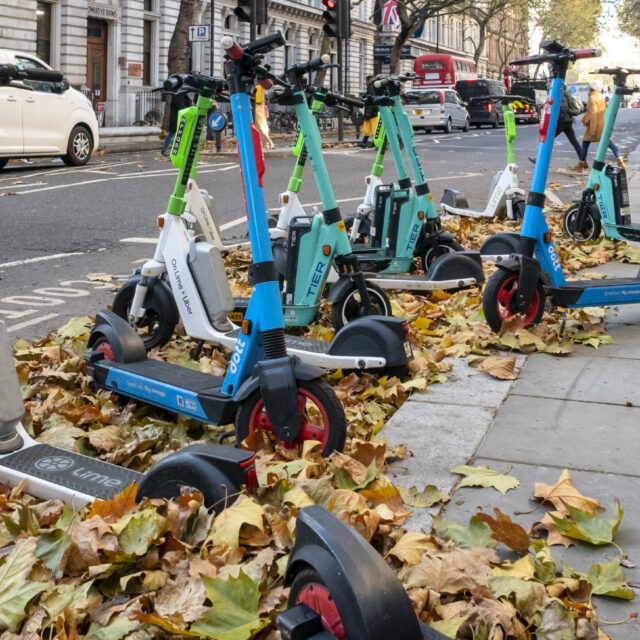Opinion: How Shared Micromobility Can Help the Low-Income
by Adam Tarshis, Chief Marketing Officer at Anadue Limited
August 15, 2023
In this piece, which originally appeared on the Anadue blog, Adam Tarshis argues that bike and scooter share can be a tool for economic mobility — but only if it’s done right.

Shared micromobility often gets a bad reputation. Some people think it’s a fad or a toy for the young and wealthy. While it’s true that in many cities, a lot of users are tourists, affluent commuters, and students, it doesn’t have to be this way.
Let’s look at shared micromobility with a fresh pair of eyes, as if it was a brand-new concept untested in any city. What are its main characteristics?
- Zero upfront investment to travel (a big advantage over all privately owned vehicles)
- No long-term commitment (so more flexibility than leasing a vehicle)
- No fixed routes or schedules (the big advantage over public transport)
On the face of it, this “new” mode of travel looks ideal for areas of low car ownership and/or below-average income. It could allow people without their own vehicle a method to access work or training opportunities currently too inconvenient to reach on public transport. It provides the freedom of a car, at a price much closer to a transit fare.
Now, let’s switch back to reality. Why aren’t shared micromobility schemes more popular in low-income areas? Often, there are two primary issues to resolve.
Price
Although there is no up-front investment required to ride a shared micromobility vehicle, the cost per journey can be higher than taking public transport. There are advantages to shared micromobility that can justify a higher price, such as the convenience of door-to-door travel or not being tied to a timetable. But if you’re watching every penny, cheap beats are convenient more times than not.
But is there always a level playing field when comparing public transport and shared micromobility? In many cities, there isn’t. In communities around the world, public transport is often subsidized by the local government because mobility is seen as an essential aspect of life. It helps the economy if people can get to work, to shops, to school/college, etc. Also, encouraging people out of their cars reduces the demand for expensive road building, reduces congestion, and leads to cleaner air (and healthier people). In many cities, the local government also subsidizes their own shared bike schemes for the same reasons.
If local government widely subsidizes public transport and in-house shared bikes, why do they often charge third-party shared micromobility companies a fee to operate on their streets? If personal mobility is recognized as a benefit to the wider society, why are companies discouraged from providing a service?
Sometimes there are good intentions; money raised by charging shared micromobility operators is used to further subsidize public transport. But in other cities, “taxing” shared micromobility operators is just seen as a relatively painless way to raise funds compared to other sources of income. This can force shared micromobility operators to “price-in” the cost of permits, and put their service out of reach of those that would benefit most from it.
Availability
The lack of availability can be caused by multiple factors, from a simple lack of permission to operate in those areas, to more complex calculations about the ability to cover the cost of operating in areas where people have low disposable incomes. Add to this the cost of vandalism to shared vehicles, and it can become uneconomic to operate in areas where shared micromobility could do the most good.
When there are too few vehicles in an area, residents can’t rely on them being there when they need them, so travel behavior can’t easily change. A bus might only pass once an hour, but if it’s reliable, it’s better than trying to commute on an e-scooter that’s nowhere to be found several days per week.
When people don’t use shared micromobility vehicles, they don’t value them. When they’re parked on the street, they become an annoyance because the people that live in the area don’t see them as useful. This can lead to increased vandalization, making even fewer vehicles available for use by residents of low-income neighborhoods.
Making shared micromobility affordable and available
Every city is different, but if the two barriers of Price and Availability can be solved, then many new areas should be able to access this new mode of personal mobility.
Anadue believes the solution is targeted price discounts: lowering prices in low-income neighborhoods should increase demand and help those neighborhoods become more connected to other parts of cities. If shared micromobility operators could reduce their prices in areas of lower average income, residents of those areas would start to see parked vehicles as useful to them, rather than something imposed upon them by outsiders. This should lead to less vandalism and reduce the cost of providing a service to these areas.
In some cities, of course, this may not be enough. Relief from the city’s “permit fees” for vehicles serving lower-income neighborhoods would be a move in the right direction. It might even be necessary for shared micromobility to receive a subsidy to operate in some areas where the social benefit is high, but the commercial position is weak.
Many countries have universal healthcare, and there have been several experiments with universal basic income. Maybe now is the time to seriously consider universal access to personal mobility?
Adam Tarshis is the chief marketing officer of Anadue Limited, which is based in Dublin, Ireland, and provides analytics and dynamic pricing solutions exclusively focused on shared micromobility. Tarshis has more than 25 years of experience in marketing communications and strategic marketing. He is a member of the ForuMM steering committee working with the U.K. micromobility industry and government.



